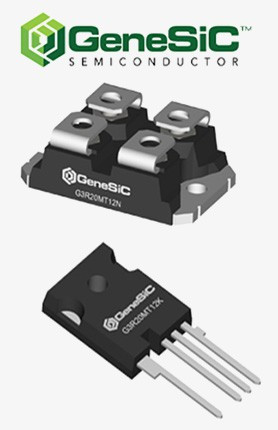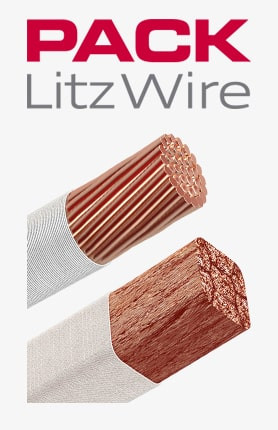trebuie să fii logat
-
întoarce-teX
-
Componente
-
-
Category
-
Semiconductoare
- Diode
- tiristoare
- Module izolate electric
- Redresoare în punte
-
Tranzistoare
- tranzistoare GeneSiC
- Module MOSFET Mitsubishi SiC
- Module MOSFET STARPOWER SiC
- Module MOSFET ABB SiC
- Module IGBT de la MITSUBISHI
- Module de tranzistori MITSUBISHI
- module MITSUBISHI MOSFET
- Module de tranzistori ABB
- Module IGBT de la POWEREX
- Module IGBT - de la INFINEON (EUPEC)
- Elemente semiconductoare din carbură de siliciu
- Accesați subcategoria
- Șoferii
- Blocuri de putere
- Accesați subcategoria
- Traductoare de curent și tensiune LEM
-
Componente pasive (condensatori, rezistențe, siguranțe, filtre)
- Rezistoare
-
Siguranțe
- Siguranțe miniaturale pentru sisteme electronice din seria ABC și AGC
- Siguranțe tubulare cu acțiune rapidă
- Inserții întârziate cu caracteristici GL/GG și AM
- Legături sigure ultra-rapide
- Siguranțe standard britanice și americane cu acțiune rapidă
- Siguranțe cu acțiune rapidă standard european
- Siguranțe de tracțiune
- Siguranțe de înaltă tensiune
- Accesați subcategoria
-
Condensatoare
- Condensatoare pentru motoare
- Condensatoare electrolitice
- Condensatori Icel Film
- Condensatoare de putere
- Condensatoare pentru circuite DC
- Condensatoare de compensare a puterii
- Condensatoare de înaltă tensiune
- Condensatoare pentru încălzire prin inducție
- Condensatoare de impulsuri
- Condensatoare DC LINK
- Condensatoare pentru circuite AC/DC
- Accesați subcategoria
- Filtre anti-interferențe
- Supercondensatoare
- Protecție la supratensiune
- Filtre de emisii revelatoare TEMPEST
-
Descărcător de supratensiune
- Descărcătoare de supratensiune pentru rețeaua de curent alternativ
- Descărcătoare de supratensiune pentru rețea de curent continuu
- Limitatoare de joasă tensiune ALVL
- Limitatoare de joasă tensiune PG
- Descărcătoare de trăsnet pentru rețele de curent alternativ până la 1000V
- Dispozitive de măsurare
- Accesați subcategoria
- Accesați subcategoria
-
Relee și Contactoare
- Teoria releelor și contactoarelor
- Relee cu stare solidă trifazată CA
- Relee cu stare solidă DC
- Regulatoare, sisteme de control și accesorii
- Porniri ușoare și contactoare inversoare
- Relee electromecanice
- Contactoare
- Comutatoare rotative
-
Relee cu stare solidă CA monofazate
- Relee cu stare solidă CA monofazate Seria 1 | D2425 | D2450
- Relee semifazate CA monofazate, seria CWA și CWD
- Relee semifazate CA monofazate seriile CMRA și CMRD
- Relee cu stare solidă CA monofazate Seria PS
- Relee cu stare solidă AC seria duble și cvadruple D24 D, TD24 Q, H12D48 D
- Relee monofazate din seria GN
- Relee cu stare solidă CA monofazate Seria CKR
- Relee monofazate pentru șină DIN AC SERIA ERDA și ERAA
- Relee AC monofazate pentru curent de 150A
- Relee duble cu stare solidă integrate cu radiator pe șină DIN
- Accesați subcategoria
- Relee cu stare solidă imprimabile monofazate CA
- Relee de interfață
- Accesați subcategoria
- Miezuri și alte componente inductive
- Radiatoare, Varistoare, Protectie termica
- Fani
- Aer conditionat, Accesorii tablou, Racitoare
-
Baterii, încărcătoare, surse de alimentare tampon și convertoare
- Baterii, încărcătoare - descriere teoretică
- Baterii litiu-ion. Baterii personalizate. Sistem de management al bateriei (BMS)
- baterii
- Incarcatoare de baterii si accesorii
- UPS și surse de alimentare tampon
- Convertoare si accesorii pentru fotovoltaice
- Stocarea energiei
- Pile de combustibil cu hidrogen
- Celule litiu-ion
- Accesați subcategoria
-
Automatizare
- Elevatoare Spiralift
- Piese pentru drone Futaba
- Întrerupătoare de limită, Micro întrerupătoare
- Senzori, traductoare
- Pirometre
- Contoare, relee de timp, contoare de panou
- Echipament industrial de protectie
- Semnale luminoase și sonore
- Cameră termică
- Afișaje LED
- Butoane și întrerupătoare
- Accesați subcategoria
-
Cabluri, fire Litz, Conduite, Conexiuni flexibile
- Firele
- Presetupe și manșoane
- Chipurile
-
Cabluri pentru aplicatii speciale
- Cabluri de prelungire și compensare
- Cabluri de termocuplu
- Cabluri de conectare pentru senzori PT
- Cabluri cu mai multe fire de temperatură. -60°C până la +1400°C
- Cabluri de medie tensiune SILICOUL
- Cabluri de aprindere
- Cabluri de incalzire
- Cabluri cu un singur conductor temp. -60°C până la +450°C
- Fire de cale ferată
- Cabluri de încălzire în ex
- Cabluri pentru industria de apărare
- Accesați subcategoria
- tricouri
-
Impletituri
- Impletituri plate
- Impletituri rotunde
- Impletituri foarte flexibile - plate
- Impletituri foarte flexibile - rotunde
- Impletituri cilindrice de cupru
- Impletituri si capace cilindrice din cupru
- Curele flexibile de împământare
- Impletituri cilindrice din otel zincat si inoxidabil
- Impletituri de cupru izolate PVC - temperatura de pana la 85 de grade C
- Impletituri plate din aluminiu
- Kit de conectare - impletituri si tuburi
- Accesați subcategoria
- Echipament de tracțiune
- Capse de cablu
- Sine flexibile izolate
- Sine flexibile multistrat
- Sisteme de management al cablurilor
- Accesați subcategoria
- Vezi toate categoriile
-
Semiconductoare
-
-
- Furnizori
-
Aplicații
- Automatizare HVAC
- Automatizare industrială
- Băncile de energie
- Cercetare si masuratori de laborator
- Componente pentru zonele cu pericol de explozie (EX)
- Echipament industrial de protectie
- Echipamente pentru dulapuri de distributie si control
- Exploatare minieră, metalurgie și turnătorie
- Imprimare
- Încălzire prin inducție
- Inginerie energetică
- Mașini CNC
- Masini de sudura si sudori
- Mașini de uscare și prelucrare a lemnului
- Masini pentru termoformarea materialelor plastice
- Măsurarea și reglarea temperaturii
- Motoare si transformatoare
- Surse de alimentare (UPS) și sisteme redresoare
- Tracțiune cu tramvai și feroviar
- Unități DC și AC (invertoare)
-
Instalare
-
-
Inductori
-
-
Dispozitive de inducție
-
-
Serviciu
-
- Kontakt
- Zobacz wszystkie kategorie
Basics of Electromagnetic Compatibility: What Is It and Why Is It Important? 2 of 8

Basics of Electromagnetic Compatibility: What Is It and Why Is It Important? 2 of 8
Explanation of Electromagnetic Interference
Electromagnetic interference refers to unwanted electromagnetic signals that can affect the operation of electronic devices and systems. They come in various forms such as radio waves, electromagnetic pulses, electrical surges, or conducted disturbances.
Electromagnetic interference can have a negative impact on devices, causing errors in data transmission, loss of information, operational instability, or even complete system failure. Examples of electromagnetic interference include:
Radiated emissions: These are unwanted electromagnetic signals emitted by devices that can interfere with the operation of other devices. They can originate from electronic devices as well as external sources such as radio transmissions, television broadcasts, telecommunications, or radars.
Surges and conducted disturbances: These are sudden changes in voltage or current in the electrical network that can cause electromagnetic disturbances. They can be caused by storms, short circuits, switching of electrical devices, or improper electrical connections.
Conducted interference: These are electromagnetic disturbances that are transmitted through electrical cables and can affect the operation of other devices. They can occur, for example, due to improper cable shielding, improper wire design, or the presence of strong magnetic fields in the environment.
Understanding and explaining electromagnetic interference is important for ensuring Electromagnetic Compatibility (EMC). EMC practices involve the application of appropriate design techniques, shielding, filtering, attenuation, and cable management to minimize the impact of electromagnetic interference on the operation of devices and systems.
It is important for manufacturers and designers to consider electromagnetic interference in the early stages of the design process to avoid EMC issues. Conducting proper EMC tests and adhering to standards and regulations related to Electromagnetic Compatibility helps ensure that devices will operate correctly and will not interfere with other devices in their environment.
Examples of Sources of Electromagnetic Interference
In today's electrified and electronic world, there are many different sources of electromagnetic interference that can affect the operation of electronic devices. Here are a few examples of common sources of electromagnetic interference:
- Electronic devices
Various electronic devices such as televisions, computers, cell phones, wireless routers, or speakers can generate electromagnetic interference in the form of radiated emissions. Signals emitted by one device can interfere with the operation of other nearby devices, especially if they operate in the same frequency. - Medical equipment
Many medical devices such as magnetic resonance imaging (MRI) machines, computerized tomography (CT) scanners, electrocardiographs (ECGs), or defibrillators generate strong electromagnetic fields for diagnosing and treating patients. These fields can interfere with the operation of other electronic devices in their vicinity, so appropriate protective measures are taken in hospitals and medical facilities. - Electrical and electromechanical devices
Electric motors, transformers, compressors, fluorescent ballasts, and other electromechanical devices generate electromagnetic fields during their operation. These fields can cause electromagnetic interference in other devices located in their close proximity. - Telecommunication networks
Radio transmissions, cellular networks, satellite television, and other telecommunication systems generate electromagnetic signals that can interfere with the operation of other devices nearby. In case of improper antenna design, installation, or shielding, interference can propagate over a greater distance. - External environment
External factors such as lightning strikes, solar radiation, strong magnetic fields near transformer substations, or other sources of interference in the natural environment can affect the operation of electronic devices.
These examples show that electromagnetic interference can originate from both internal and external sources. That is why it is important to design, test, and implement appropriate protective measures and EMC principles to minimize the impact of these interferences on the operation of electronic devices.
Potential Effects of Electromagnetic Interference on Electronic Devices
Electromagnetic interference can have a range of potential effects on the operation of electronic devices. Inadequate management of interference can lead to various problems that can affect the reliability, performance, and safety of the devices. Here are a few potential effects of electromagnetic interference on electronic devices:
- Failures and damages
Strong electromagnetic interference can cause failures and damages to electronic components. For example, sudden electrical surges or electromagnetic pulses can contribute to component burnout, damage microprocessors, memory, or other critical components. - Data transmission errors
Electromagnetic interference can disrupt data transmission in communication networks. It can cause errors in information transfer, signal distortions, or even data loss. In the case of communication systems, faulty transmission can lead to disruptions in connections, deteriorated call quality, or loss of transmitted data. - Instability and operational errors
Electromagnetic interference can cause instability in the operation of electronic devices. It can result in interrupted connections, unexpected program freezes, malfunctioning sensors, or controllers. In extreme cases, it can lead to complete device failure. - Electromagnetic interference
Electromagnetic interference can cause mutual interference between different devices. If devices are not adequately resistant to interference or properly isolated, mutual interference can occur, leading to deteriorated performance and increased chances of failure. - Threat to safety
In some cases, electromagnetic interference can pose a safety hazard. For example, in the case of medical systems such as implants, interference can affect the proper functioning of these devices, which can have serious consequences for the patient.
That is why managing Electromagnetic Compatibility (EMC) is extremely important. Through proper design, testing, and adherence to EMC standards and regulations, potential effects of electromagnetic interference can be minimized, ensuring reliable operation of electronic devices.
Related product
Related posts
 Now available – DC/DC converters from PREMIUM
Now available – DC/DC converters from PREMIUM
 New release in DACPOL lighting for lathes – Kira covers
New release in DACPOL lighting for lathes – Kira covers





Leave a comment